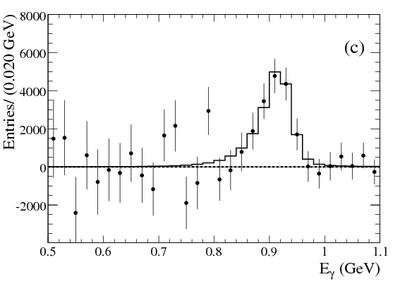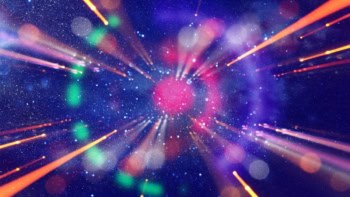
Physicists working on the BaBar experiment at the Stanford Linear Accelerator Center in California are the first to see the lightest member of the “bottomonia” family of mesons — 30 years after the first of its heavier siblings was discovered. physicsworld.com talks to BaBar team member Tim Gershon of the University of Warwick about the significance of the discovery.
So what exactly is bottomonia?
It is a family of mesons comprising a bottom quark and an anti-bottom quark, which can pair up to form a number of different mass states. The Υ meson was the first bottomonia particle to be seen (at Fermilab in 1977) and is an excited or heavier mass state. Since then physicists have detected 12 other excited states — but never the lowest mass (or ground state) meson called ηb.
Why is it important to observe the ground state?
It is particularly important to know the ground-state mass because it relates directly to the theory used to understand the strong force
Measuring the masses of the bottomonia mesons tells us a great deal about their constituent quarks and the strong force that binds them together. It is particularly important to know the ground-state mass because it relates directly to the theory used to understand the strong force. The bottom quark is of great interest to those studying the very early universe because it would have been abundant in the quark-gluon primordial soup that existed for several microseconds after the Big Bang. Understanding the forces acting on this quark could shed light on important mysteries of this period, such as why the universe evolved to contain much more matter than antimatter.
Why did it take 30 years to make the measurement?
The ground state has zero spin, whereas the excited states can have non-zero integer values of spin. This means that the excited states will often decay with distinctive “signatures”, which can be detected in an experiment. An example is the decay of the Υ into a pair of muons with opposite charges. The ηb on the other hand is expected to decay mainly to multiple lighter particles, making it much more difficult to spot. Indeed, millions, if not billions, of ηb particles are believed to have already been produced in accelerators such as the Tevatron at Fermilab. However, it has not been possible to find its decay products amongst other all the other particles produced in the collisions.
How did the BaBar collaboration get around this problem?
We used an approach that does not require reconstructing the ηb from its decay products (arXiv:0807.1086v1). Instead, we used data accumulated during special runs of the PEP-II accelerator at the Stanford Linear Accelerator Laboratory (SLAC), in which about 100 million Υ(3S) mesons were produced by smashing together electrons and positrons. The Υ(3S) can decay to produce an ηb by emitting a photon with a characteristic energy.
About 20,000 such photons were detected by BaBar and, after careful analysis, we were able to conclude without reasonable doubt that we had observed the ηb meson. We were also able to determine that its mass is about 9340 MeV, making it about ten times the mass of the proton.
Was this the mass you expected?
Theoretical models gave a range within which the mass (or actually, the so-called “mass splitting” — the difference between the ηb mass and the Υ mass) was expected to be found. The measured value is slightly above most expectations, but consistent with some recent calculations.
Are there any more missing bottomonia states to be found?
There are several waiting to be found, and physicists at BaBar are now scouring the Υ(3S) data in search of them. We expect more exciting results to come from the analysis of this data.
However, it is likely that the sensitivity of the BaBar data will not be enough to answer all questions about the bottomonia and a more precise experiment will be needed. A proposal for an experiment called SuperB is now being discussed in Italy. While the primary goal of this experiment is to study particle physics beyond the Standard Model, it will also provide the ideal environment to study quarkonia physics, which includes bottomonia and charmonia — the latter being mesons comprising charm and anti-charm quark pairs.



